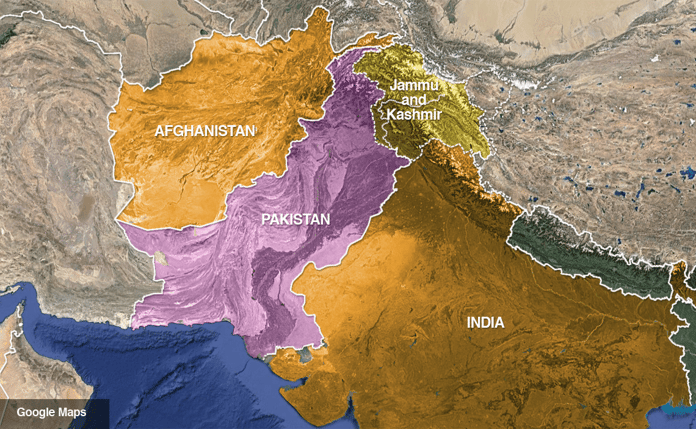Since Imran Khan has taken over the chair, Pakistan has been pulled into an unprecedented financial crux with woeful economic downslides, leading the country to the higher inflation rate. on the other hand, political relations with neighboring Afghanistan have reached the verge, Afghanistan is currently one of the largest trade partners of Pakistan, due to the significant strategic location and a Pakistan’s profitable hub.
The crises have compelled the country to appeal to the Gulf countries (e.g. UAE & Saudi Arabia) and it’s strategic-ally China for aids to be able to chase the crises. By the end of June 2018, Pakistan had a current account deficit of $18 billion, nearly a 45 percent increase from an account deficit of $12.4 billion in 2017. Hefty imports (including those related to the China-Pakistan Economic Corridor (CPEC)) and less-than-projected inflows including export revenues and remittances have led to a current account deficit broadening, with foreign currency reserves levels covering less than two months of imports-pushing towards a difficult economic situation.
2018 has been proven to be a poor year for Pakistan. Several factors e.g. global monetary tightening, increase in oil prices, and reduced investors’ confidence has woefully impacted the country’s precarious situation. On the other hand, the deep-seated financial complications and weak economic policies have further pushed the country’s economy to a range of debt vulnerabilities. The country’s currency (Rupee) has also been devaluing. As recently one Rupee has been valued at 154 against one dollar (1$= 154.45 RS). Perhaps Pakistan’s financial problems are considered by economists to be the chronically poor mobilization of internal resources and extensive tax hedging.
Also Read>> In Shanghai, Macron calls for “European play” against China
Moreover, Pakistan’s external debts are estimated to climb to $103 billion by June 2019. Chines financial aids and investments in Pakistan are quoted as the major drivers for Pakistan debt crisis, this perception is precise to a certain level because China makes Pakistan a key partner in terms of economic and infrastructural projects like CPEC. CPEC program is projected to be a $60 billion infrastructural project which aims at the connectivity of China with the Gulf and the middle east. The huge budget is thought to be a heavy debt burden for Pakistan, but the ongoing crisis is indigenous and homegrown.
The above turning points provoked Pakistan to turn to its all-weather Ally China for $2.5 billion (nearly 18,000) loan. According to economists, Beijing’s money will help Islamabad boost its official foreign reserves, despite a remarkable amount of aids from Saudi Arabia and the UAE. Another core force behind Pakistan’s economic decline is the Afghanistan-Pakistan bilateral trade disputes that have intensified over the last two years, since, the Afghan government has made several changes in the economic policies with regard to the transit with Pakistan including the tertiary memorandum of understanding (MOU) signed by Afghanistan, India, and Iran in order to embark transit between Afghanistan and India via Chabahar port Iran. This was a red signal for Pakistan because earlier Afghanistan-India trade was being carried via routes in Pakistan that were yielding Pakistan in terms of charging high rate tariffs.
Both the countries have recently started an aerial transit but Pakistan due to the external and innermost financial pressures has intercepted the Indo-Afghan trade followed by a shut down of the Duran line for the immigrants and visitors. the Afghan government has signed an agreement with China which to export pine nuts to China, earlier pine nuts were being smuggled to Pakistan and re-exported to China under Pakistani label and trademark, Pakistan used to export 10,000 tons of pine nuts to China every year. The Afghan-China trade agreement appeared to be yielding for Afghanistan’s economy but approved otherwise in case of Pakistan, the Afghan-China trade agreement has served another core element for Pakistan be completely grabbed both economically and politically.
Besides, the Afghan government a few months ago blocked the Turnham gate which is considered to be the vital trade port both for Afghanistan and Pakistan and approximately two thousand Pakistani containers were stuck beyond the border due to the blockade of the port by the Afghan side. Hence, these maneuvers by the Afghan government has caused Pakistan a detrimental economical backwash. according to the newly published statistics, last year’s trade value between the two countries dropped by $1 billion to $1.5 billion while in 2015 it was $2.5 billion. The commerce authorities of Pakistan claimed that the closure of the Pak-Afghan border contributed to a steady decline in Pakistan’s exports to Afghanistan. Another reason was the diversion of Afghanistan’s trade routes from Pakistan to Iran. Such impositions have so far been harmful to Pakistani traders as Afghanistan has always been considered to be a profit-making market for Pakistani products.
The International monetary fund (IMF) and the USA also a few months ago denied aiding Pakistan financially anymore as the external debts of Pakistan were/are going sky-high due to which Pakistan would not be able to recover the loans. However, Pakistan as always attempted to pressurize the Afghan government through political means in order to reopen the Pak-Afghan border for transit, the prime minister Imran Khan also announced that the border must remain open for 24 hours for their containers to ship to central Asia via Afghanistan.
Since Pakistan is confronting incessant financial crises and for an excessively long period government of the country has been entirely dependent on China and U.S bilateral assistance. This may not be the first and final option for Pakistan. Pak government needs to hold a subtle political and economic relationship with the region, Afghanistan, and India in particular in order to sustain its forex. To come out of the macroeconomic and fiscal impediments, Pakistan must seek ways to effectively mobilize its internal resources and avoid waging the various extremist groups both politically and financially, instead, they must spend the money in overcoming the contemporary financial drawbacks facing its own country.



Comments are closed.